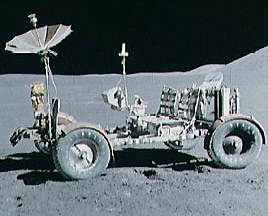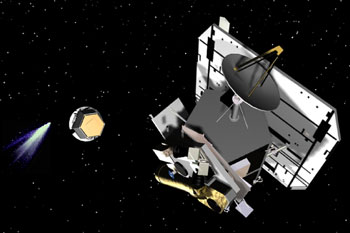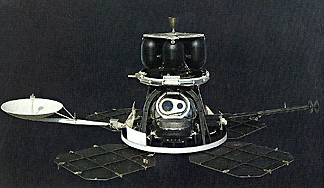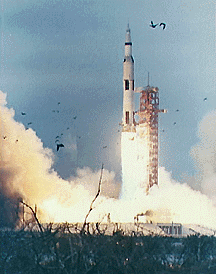Picture of Apollo 9 launch
NASA
Apollo 9
The major goal of the Apollo 9 mission was to conduct the first tests of the Lunar Module and other new space equipment. The Lunar Module was the latest piece of NASA hardware, designed to carry astronauts to the Moon's surface and safely return them to their Space Module. It would prove successful in all nine of its uses for the Apollo space program.
Apollo 9 lifted off on Mar. 3, 1969, with astronauts James McDivitt, David Scott, and Russell Schweickart on board, becoming the first flight with all the equipment necessary for a lunar landing. During 152 orbits of Earth, McDivitt undocked the Lunar Module and, in conditions similar to those around the Moon, successfully reattatched it to the Space Module.
The astronauts also tested a new space suit designed with a built-in life support system, enabling them to move around freely, as would be needed on the lunar surface. Apollo 9, though not as famous as other Apollo missions, gave scientists much valuable information about safely reaching the Moon, a goal finally achieved by Apollo 11.
You might also be interested in:

Driven by a recent surge in space research, the Apollo program hoped to add to the accomplishments of the Lunar Orbiter and Surveyor missions of the late 1960's. Apollo 11 was the first mission to succeed
...more
The Hubble Space Telescope (HST) was one of the most important exploration tools of the past two decades, and will continue to serve as a great resource well into the new millennium. The HST is credited
...more
Apollo 12 survived a lightning strike during its launch on Nov. 14, 1969, and arrived at the Moon three days later. Astronauts Charles Conrad and Alan Bean descended to the surface, while Richard Gordon
...more
Apollo 15 marked the start of a new series of missions from the Apollo space program, each capable of exploring more lunar terrain than ever before. Launched on July 26, 1971, Apollo 15 reached the Moon
...more
NASA chose Deep Impact to be part of a special series called the Discovery Program on July 7, 1999. In May 2001, Deep Impact was given the "go" from NASA to start with mission development. Deep Impact
...more
The Galileo spacecraft was launched on October 19, 1989. Galileo had two parts: an orbiter and a descent probe that parachuted into Jupiter's atmosphere. Galileo's primary mission was to explore the Jovian
...more
During 1966 through 1967, five identical Lunar Orbiter spacecrafts were launched, with the purpose of mapping the Moon's surface and finding smooth, level terrain, in preparation for the Apollo and Surveyor
...more















